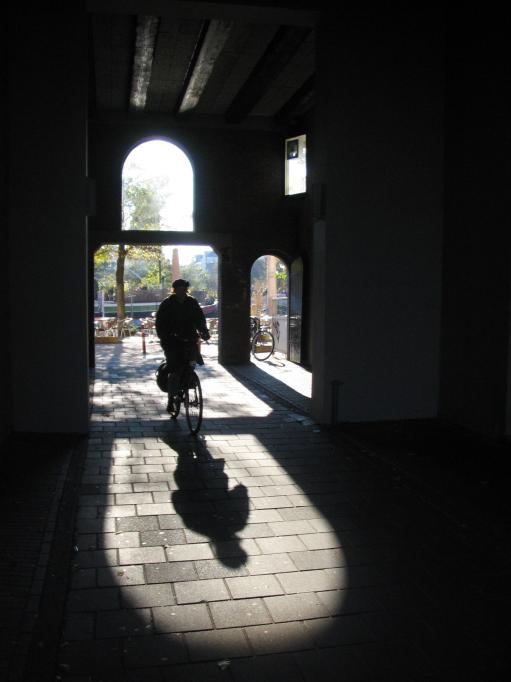
Lately, I’ve been doing some thinking about the role of bicycles. The question I’ve been contemplating has been raised before, but it has recently presented itself to me in a different light.
A bicycle always exists in relation to its rider. An unridden bicycle has no purpose, other than perhaps as an ornamental fixture. It needs its rider to fulfill a function, to fulfill a need.
One would think that the relation of bicycle to rider would always remain the same, yet instead it remains something of a paradox. The paradox is as follows: Sometimes a bicycle is used for activities and other times the bicycle is the activity. Depending upon context, the bicycle’s role changes, while its function remains the same.
Take, for example, the use of a bicycle for transportation. In this case the bicycle serves as a tool for transporting its rider from one location to another. The activity would run along the lines of going to work or to school. Or it could entail running errands or shopping. In each of these cases, the bicycle is a means to an end.
Similarly, a bicycle can be a social vehicle. It can serve as basis for socializing with like-minded individuals in structured settings such as tours or group rides. These activities are designed to bring two or more riders together in a social setting, and in this sense, the bicycle is almost a backdrop for human interaction.
It might seem as if a bicycle is always used used for activities, but on occasion it is not. At times people go out for the sole purpose of cycling. The goal is to ride the bike.
Reasons for making the bicycle the activity can vary. Exercise, training for athletic competition, stress reduction, and strength training are all examples of cycling as the activity.
These two bicycle roles, however, are not always mutually exclusive. And this is where the paradox plays out.
The role of a bicycle can morph over time. There is activity overlap. Training rides, while centered on the act of riding, can take on a social connotation when people ride in groups. The bike is the activity while simultaneously being used for an activity.
This may seem not to matter in any but a philosophical way. Still, it highlights the versatility of the bicycle and contrasts it to other vehicles whose roles are unidimensional.
Cars are unidimensional. They are used exclusively as transportation today. Historically, cars possessed a social element in that young people used them as a location for hanging out.
Kids got together and rode around or sat in the cars to eat or make out or watch outdoor movies. But this was different from the use of bicycles for activities because cars could only be properly used for activities — other than driving — when they were stationary. Bicycles, on the other hand, can be used for other activities while they are moving.
To contrast the multiple roles of these two vehicle types is to recognize that only bicycles can take on different relationships to their operators while in motion. And the two, operator and bicycle, are united in motion, unlike their driving counterparts.
Driving is a sedentary form of motion. Only the car is moving; it is the active party. In fact, driving is a contradiction in terms. It is motion and stillness simultaneously. Perhaps this contradiction is its appeal. Drivers and passengers can remain virtually motionless and end up somewhere other than where they started.
All of this philosophy may seem a bit much on a Monday morning. But despite the recent, massive New England snowstorms, spring is around the corner.
This time of year, replete with budding vegetation, brings renewed energy to invest in the ongoing fight to propel bicycles into the mainstream of society. For it is at this time of year, when seasonal riders raise the total number of bicycles on our roads, that cycling makes its annual emergence.
The increase in visible bicycles makes mainstream cycling appear to be more of a reality. And while cycling is fresh on everyone’s mind, we can make the argument that bicycles really are the most versatile vehicles and the ones that will revolutionize accelerated human movement going forward into the future.



2 Responses to The Dual Role Of Bicycles